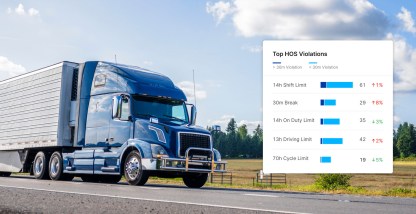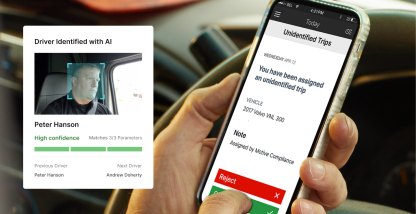The FMCSA’s hours-of-service rules and regulations (HOS rules) tackle road safety and minimize driving accidents. One is called the 30-minute break rule, which requires commercial drivers to take a break after eight hours of driving.
The HOS 30-minute break rule has been around for years now. However, the FMCSA recently made some changes.
In this post, we’ll discuss the 30-minute break rule in detail.
What is the HOS 30-minute break rule?
The 30-minute break rule is an Hours of Service regulation that requires most commercial drivers to take a break of at least 30 minutes after driving for eight hours.
The 30-minute consecutive break could be satisfied by:
- Taking 30 consecutive minutes off duty/on duty without driving
- Spending 30 consecutive minutes in the sleeper berth
- A combination of both that equals 30 consecutive minutes
Commercial drivers can work beyond eight hours of driving time without taking a 30-minute break but they can’t drive. For instance, a driver can perform other non-driving tasks, such as loading and unloading cargo.
Moreover, the 30-minute break doesn’t extend the 14-hour window in which a driver must complete their drive time.
Changes to the FMCSA 30-minute break rule
The FMCSA first introduced the 30-minute break rule on December 27, 2011. On June 1, 2020, the FMCSA published the revised HOS regulations, including the 30-minute break provision.
The new FMCSA 30-minute break rule became effective on September 29, 2020.
Qualifying motor carriers and drivers now follow the provisions in this revised regulation.
Differences between the old and new rules
According to the old rule, drivers had to take a break of 30 consecutive minutes after being on duty for eight hours.
According to the new rule, drivers only have to take a 30-minute break after driving for eight cumulative hours.
The modified 30-minute DOT break rule gives commercial motor vehicle (CMV) drivers greater flexibility without compromising road safety.
10 points to remember about the DOT 30-minute break rule
If the FMSCA 30-minute break rule seems confusing, just remember the following points:
- Drivers can’t drive after eight hours of drive time until they take a break of 30 consecutive minutes.
- However, they can perform other non-driving tasks.
- Driving for eight hours doesn’t have to be consecutive. The eight-hour driving time is cumulative.
- The 30-minute break is mandatory for commercial drivers. It’s not optional like the 34-hour restart rule is.
- The 30 minutes must be consecutive.
- The 30-minute break can be taken off duty, on duty, in the sleeper berth, or as a combination of the above.
- The 30-minute break doesn’t extend the 14-hour window. Therefore, those 30 minutes will count towards the available 14 on-duty hours.
- The 30-minute break rule doesn’t apply to passenger-carrying vehicles.
- Short-haul drivers who qualify for the 150 air-mile radius exceptions aren’t required to take the break.
- Hazmat drivers also need to take the 30-minute break and log it “off duty.” But drivers transporting Division 1.1, 1.2, and 1.3 explosives must log their 30-minute break as “on duty.”
How to log the 30-minute break in the Motive Driver App
The Motive Driver App makes it incredibly simple for drivers to log their mandatory 30-minute break. If you’re a property-carrying driver, just make sure that the “30-minute rest break required” option is active in the app’s logs settings.
Go to the sidebar menu > Settings > Cycle Rules. Select the correct cycle (e.g., USA 70 hour / 8 day) and cargo type (property) to see the 30-minute rest break option.
The Motive Driver App will automatically notify you of a possible HOS violation if you don’t take the 30-minute break after driving for eight hours.
If the 30-minute break rule doesn’t apply to you, just deselect the 30-minute break option under the app settings, and you won’t be notified to take the break.
Conclusion
Property-carrying commercial drivers are required to take a break of 30 consecutive minutes after driving for eight hours. Failure to do so may result in an hours-of-service violation.
Previously, the HOS 30-minute break rule didn’t offer as much flexibility because drivers were required to take a break after being on duty for eight hours. However, the FMCSA has recently tweaked the hours-of-service rules to make them more flexible and driver-friendly.
Motive makes it incredibly easy for drivers to take these breaks when required and avoid Hours of Service violations and subsequent penalties. You can download the Motive Driver App for free on iOS and Android and improve your fleet risk management.
Learn more about the Motive ELD solution and how it simplifies fleet management and helps with ELD compliance.
Request a free demo today for more details.









